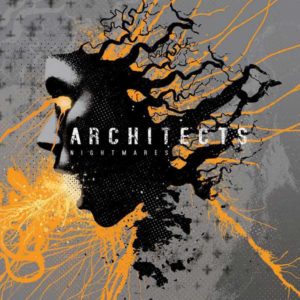Ranking the discography of any band comes with a different set of challenges. How do you accurately compare and rank a body of work that spans years, genres, and musical trends? That’s what we’re attempting to do by ranking the discography of beloved metalcore band Architects. 7 albums and over a decade into their careers, the band’s constant touring and (mostly) subtle shifts in style have earned them a dedicated fanbase.
We’re ranking each of Architects 7 full-lengths with respect to the band’s changing styles, where they came from, and where they’re going. All of them are worth a listen (yes, even The Here And Now), and are best listened to in sequential order to see how the evolution of Architects manifested itself.
The Here And Now (2011)
I get why many Architects fans despised this album upon its release. It followed up their beloved album Hollow Crown, and was a strong departure from that album as well. If anything, the first half of the album reminds me a lot of mid-period Alexisonfire, which is certainly not a bad thing. Architects attempted to bury this album rather quickly, and it’s clearly the least effective Architects album, but it’s also not bad. Particular highlights are the single “Learn To Live” and the album’s explosive finale, “Year In Year Out / Up and Away”, which also features an intense vocal tradeoff between Sam Carter and Dillinger Escape Plan’s Greg Puciato. Give the album another chance if you haven’t, it may surprise you.
Nightmares (2006)
In the mid-2000’s, Architects were part of a young and rising group of bands that played a highly technical and chaotic form of metalcore. Some succeeded (Bring Me The Horizon) and some broke up (Johnny Truant), but all of these bands made a lasting mark on the music scene.
Nightmares, the first Architects album, features a different vocalist (Matt Johnson) and was a far cry from what the band would eventually become. If you listen closely to tracks like “In The Desert” and “Minesweeper”, though, you can detect a hint of melody among the chaos – which the band would explore further with each passing album.
Daybreaker (2012)
Daybreaker was a clear attempt to distance Architects from The Here And Now, and it largely succeeded. There’s a few important standout tracks that highlight the band’s improved songwriting techniques – whether it’s the ferocious “Outsider Heart”, the keyboard-laden “Behind The Throne”, or the politically-charged “Devil’s Island”, Daybreaker represents an important evolution.
All Our Gods Have Abandoned Us (2016)
For many bands, AOGHAU would be a magnus opus of sorts. At the peak of their songwriting abilities as a band, Sam Carter’s vocal abilities reached their peak on tracks like “Deathwish” and album highlight “Gone With The Wind”, but it’s the keyboard-heavy album closer “Memento Mori” that also shows some incredible emotion and pummeling post-metal influenced ebb and flow. And the lyrics are surely haunting.
Ruin (2007)
Before there was Hollow Crown, there was Ruin. For an album that’s this chaotic, it’s surprisingly accessible. There’s enough complex riffs and drum patterns to make any mathcore fan’s head spin, but tracks like the roaring album opener “Buried At Sea” and “You’ll Find Safety” hint at more melodic underpinnings that would be explored on newer material. Ruin is a great midpoint between the band’s 1st and 2nd “eras”.
Lost Forever // Lost Together (2014)
Lost Forever // Lost Together is truly a breakout record in all facets. Songwriting, lyrics, and experimentation. You can point to almost any track on the album as a standout, whether it’s the band’s typical metalcore stomp of “Naysayer” or the bouncing rhythm of the melodic “Castles In The Air”. You’ll find very little filler on the album at all, which makes it arguably their most consistently solid work. And it would be the band’s best album if it weren’t for…
Hollow Crown (2009)
Hollow Crown was an album that truly put the UK metalcore scene in the spotlight. Far and away the band’s most explosive material to that point, there is truly no letup from the moment career highlight “Early Grave” kicks in. A little more melody is in the mix on “Follow The Water” and “In Elegance”, but Hollow Crown is essentially the album that made Architects a household name – at least in the UK and Europe. Seriously, listen to the drum fills on “Numbers Count For Nothing” – an oft-overlooked song in the Architects catalogue. If you’re looking for the midway point between the band’s newer, more standard metalcore material and their earlier, Botch/Dillinger-influenced work, this is where to go first.
What order would you rank the expansive Architects discography? There is no wrong answer.
Rest in power, Tom.













More Stories
Patient Sixty-Seven continue to rack up impressive numbers on new EP, ‘What If It Never Gets Better’
Linkin Park’s super heavy “QWERTY” has been unveiled to the world, and predictably, it’s going viral on social media
Good news! Deftones have almost finished their upcoming tenth full-length album